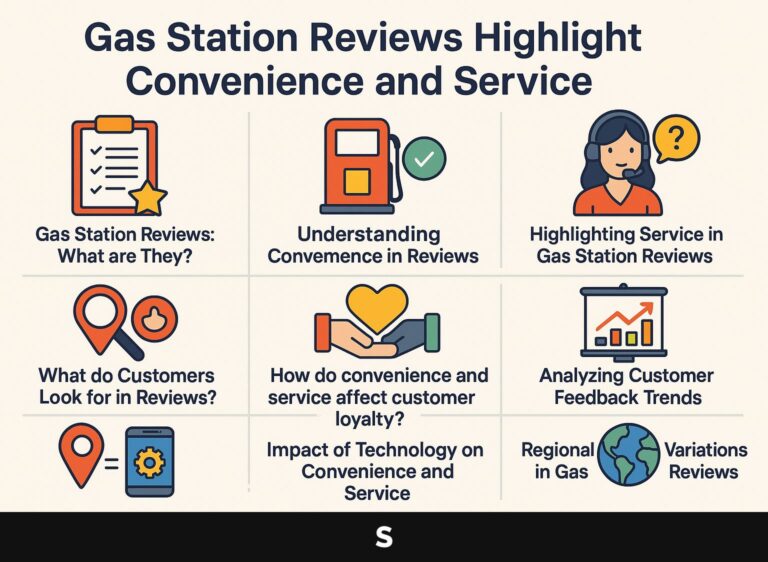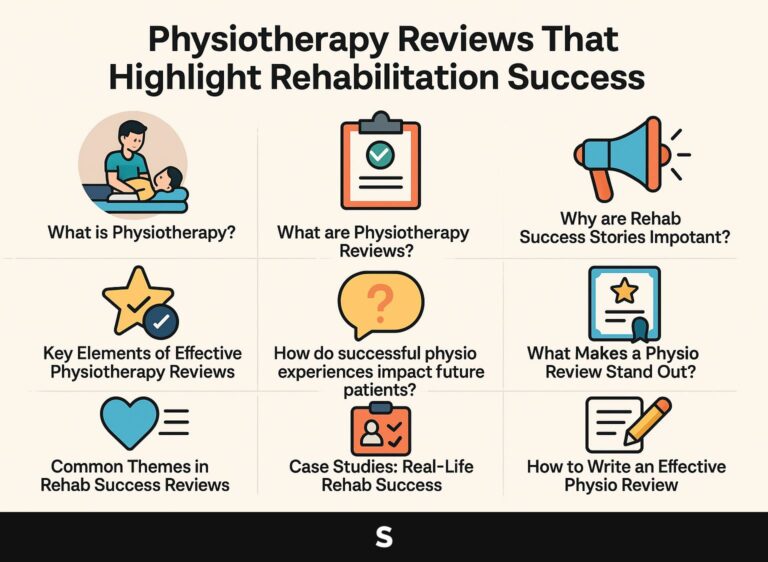Martial Arts School Reviews That Welcome All Skill Levels
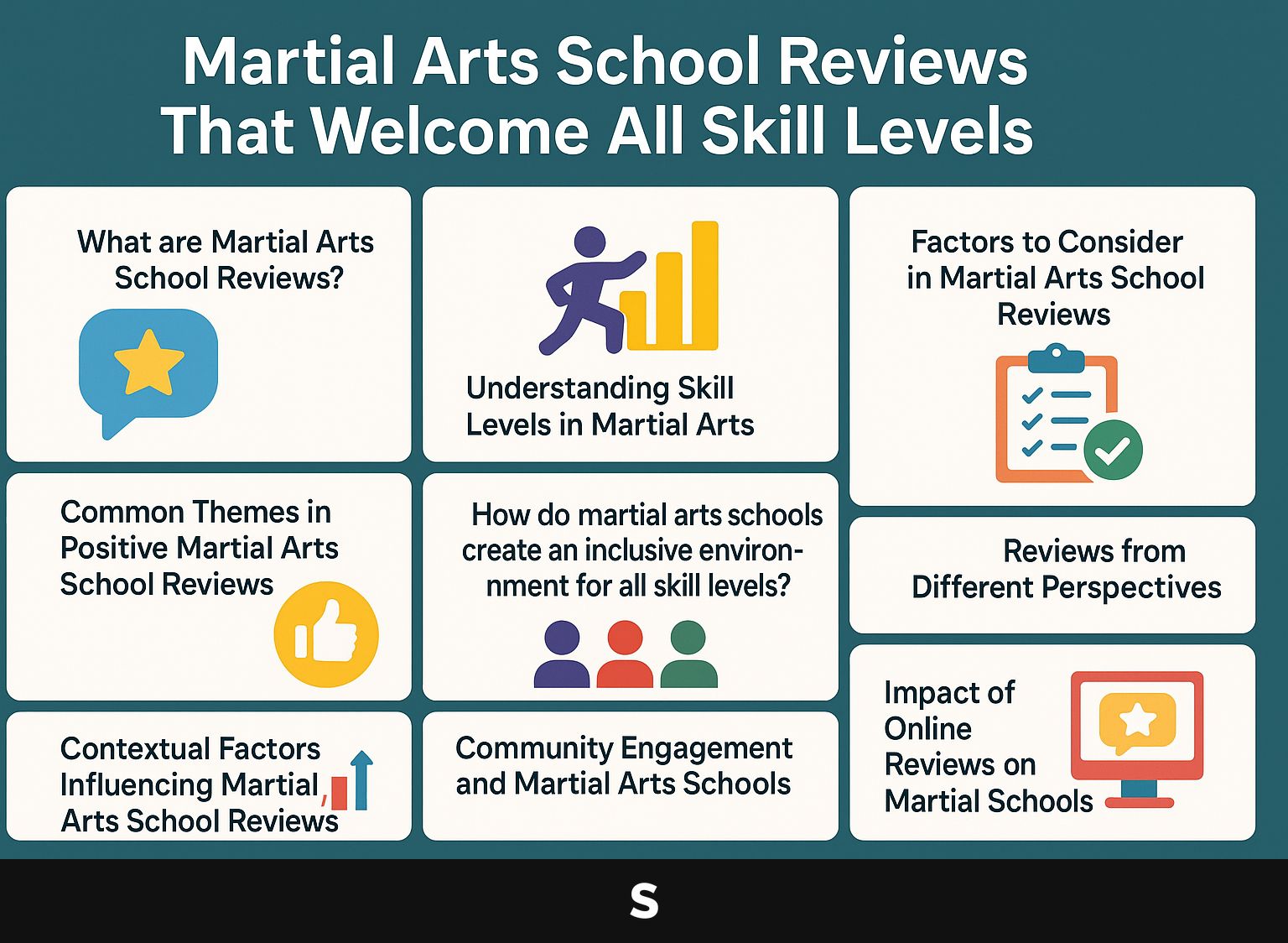
Starting martial arts can seem overwhelming, particularly if you’re new or coming back after a long time. At Velez Martial Arts and Kodokai Dojo, inclusivity is key. Our reviews point out friendly places where anyone, no matter their ability, can succeed-whether you’re interested in self-defense classes or Brazilian Jiu-jitsu. Learn how these schools teach practical skills while building confidence and a sense of belonging, making them a great choice for both families and individuals.
Key Takeaways:
- Reviews of martial arts schools that accept all individuals help potential students understand the range of skill levels available and the friendly atmosphere.
- Teachers are important in building a supportive environment for everyone, focusing on life skills and meeting various needs.
- The accessibility and community involvement of a school, along with diverse online reviews, can influence the overall perception and success of a martial arts school.
- What are Martial Arts School Reviews?
- Comprehending Martial Arts Skill Levels
- Factors to Consider in Martial Arts School Reviews
- Common Themes in Positive Martial Arts School Reviews
- 4. Reviews from Different Perspectives
- How do martial arts schools create an inclusive environment for all skill levels?
- Factors That Impact Martial Arts School Reviews
- Community Engagement and Martial Arts Schools
- Impact of Online Reviews on Martial Arts Schools
- Comparative Analysis of Schools Based on Reviews
- Upcoming Patterns in Martial Arts School Evaluations
- Frequently Asked Questions
- 1. What makes a martial arts school welcoming for all skill levels?
- 2. Why are welcoming martial arts reviews important?
- 3. How do inclusive martial arts reviews benefit families?
- 4. Why is it important for martial arts schools to focus on life skills?
- 5. How can a martial arts school accommodate individuals of different skill levels?
- 6. What sets a welcoming martial arts school apart from others?
What are Martial Arts School Reviews?
Martial arts school reviews offer useful information about students’ experiences, especially focusing on the welcoming and supportive atmosphere created by instructors, like the family-friendly environment at Velez Martial Arts.
1. How do reviews differ from traditional ratings?
Unlike traditional ratings that rely heavily on numerical scores, martial arts school reviews focus on qualitative feedback, providing a narrative that captures the personal growth and community aspects of the training environment.
When exploring reviews, pay attention to specific anecdotes. Pay attention to how instructors interact with students, like adjusting methods for various skills or offering one-on-one guidance.
Also, consider comments on the school’s atmosphere; does it promote inclusivity and respect among students? Comments on class sizes can show if students get individual attention.
Paying attention to community involvement can greatly improve your training experience, so it is important to consider personal stories as well as numerical ratings you come across.
2. Why are inclusive reviews important for potential students?
Inclusive reviews are important for potential students because they show how martial arts schools welcome people from different backgrounds, abilities, and personal aims. This creates a friendly environment like the one Sensei David provides at Velez Martial Arts.
An example is a review showing how Velez Martial Arts uses techniques suitable for students with physical disabilities, demonstrating a strong dedication to inclusivity. These findings help create a welcoming environment and motivate students of all ages to join, as they know they will get individual attention.
Reviews that mention smaller class sizes or specialized programs for children further demonstrate how these schools prioritize individual needs. In the end, thorough reviews help families find a school that values each student’s path.
Comprehending Martial Arts Skill Levels
Knowing the skill levels in martial arts is important for creating classes that match each student’s abilities. This helps students at any level get the right teaching and help they need to improve.
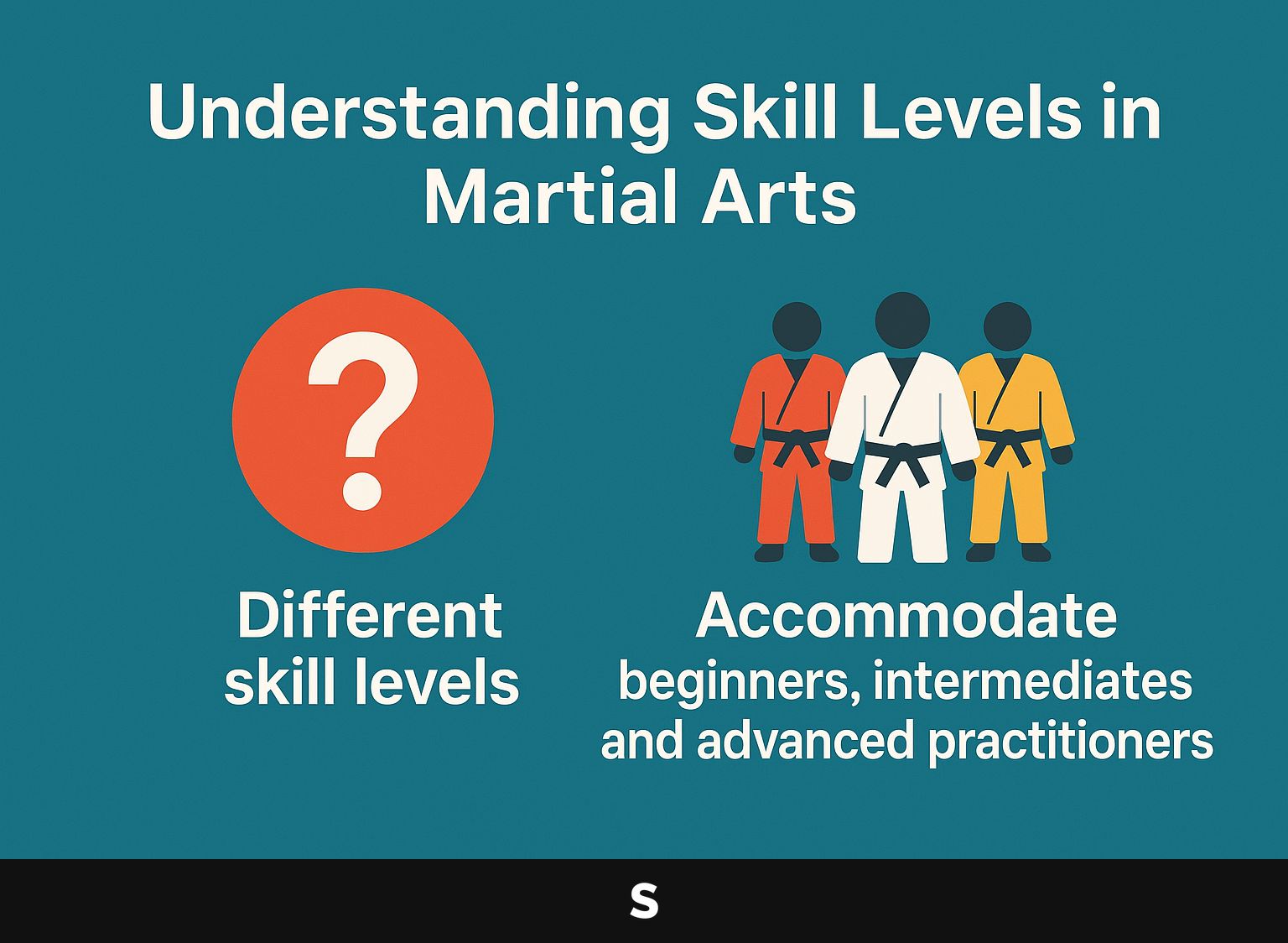
1. What constitutes different skill levels in martial arts?
Skill levels in martial arts usually go from beginners, who are just starting, to advanced students, who have improved their techniques and knowledge through years of practice.
Beginners focus on foundational skills, such as stances and basic strikes, often practicing under close supervision.
Practitioners with some experience improve their skills and begin sparring, which involves more detailed exercises and working with a partner.
Advanced practitioners, with years of experience, engage in competitive training and may begin teaching, emphasizing strategy, timing, and mental conditioning.
For example, someone new to training might use a basic heavy bag to practice striking, while a more experienced student might work with a partner using pads or study fight videos to improve tactics. It’s important to work with experienced teachers at every level to receive personal feedback.
2. How do schools accommodate beginners, intermediates, and advanced practitioners?
Schools like Velez Martial Arts offer training programs designed for beginners, intermediates, and advanced students. This approach allows each person to improve at their own speed.
For example, newcomers might begin with a beginner class focusing on essential techniques and ideas, while those with more experience participate in sessions to improve their skills.
Experienced practitioners can join sparring workshops that test their skills and help build leadership. Schools can use assessment tools such as skill checklists to create lesson plans that fit each student’s unique needs.
Peer mentorship can be very helpful, matching experienced students with newcomers to improve learning through shared experiences and support.
Factors to Consider in Martial Arts School Reviews
When looking at martial arts school reviews, you should consider the school’s environment, the instructors’ qualifications, and the overall culture, as these aspects greatly affect the learning experience.
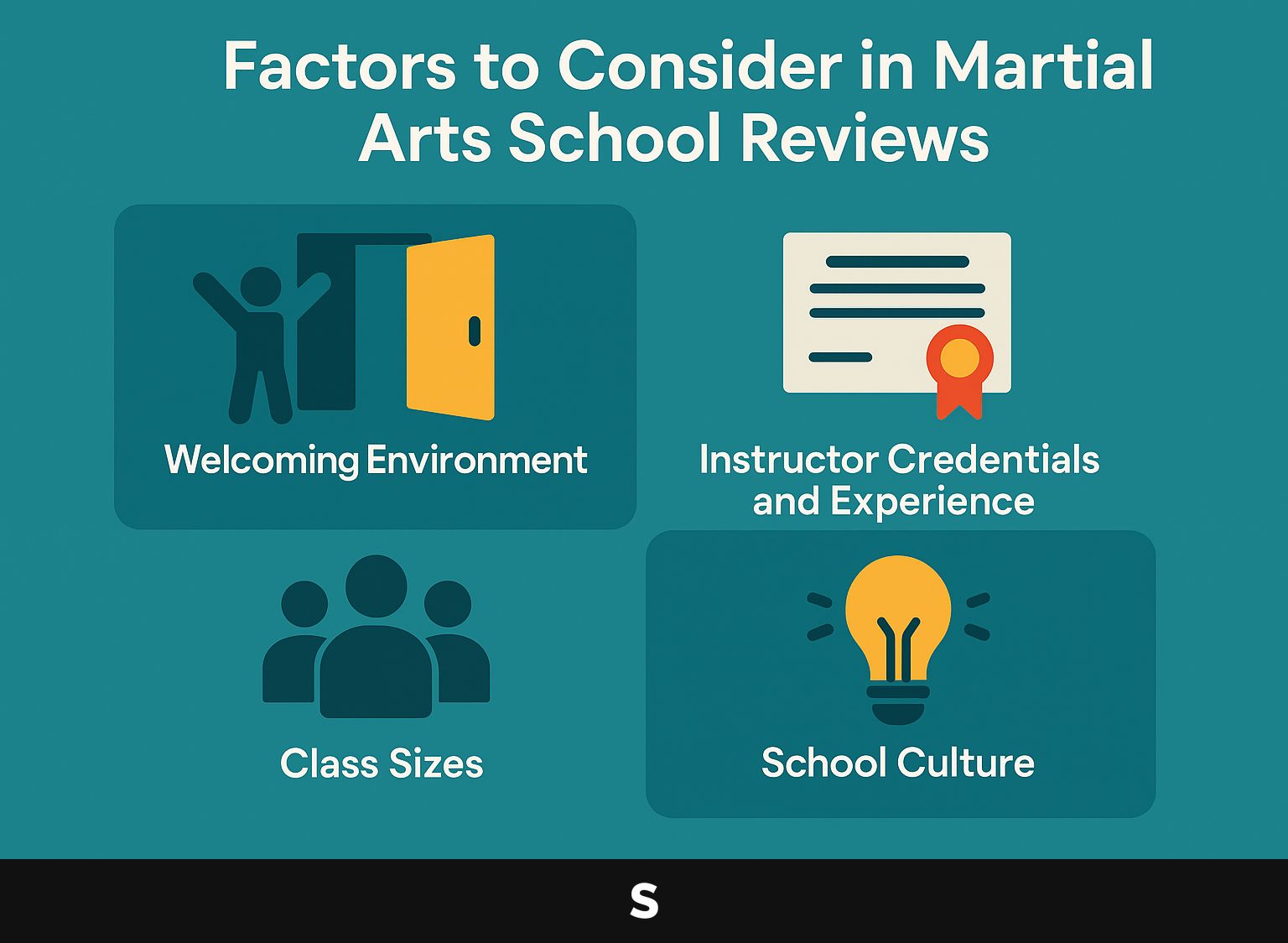
1. What should you look for in a welcoming environment?
A welcoming environment in martial arts schools is characterized by positive engagement from instructors, an inclusive culture, and a focus on personal growth and respect among students.
Teachers at schools like Velez Martial Arts often focus on clear communication, answering questions, and giving useful feedback after classes.
Reviews emphasize how students encouraging one another during practice builds friendship and motivation.
Family-friendly policies, like flexible class schedules for parents and activities for children, make the school more welcoming. These elements work together to create a safe environment where everyone feels valued and encouraged to grow.
2. How important are instructor credentials and experience?
Having qualified instructors with a lot of teaching experience is important in martial arts schools. They make sure students get lessons that are both safe and work well.
Qualified instructors often hold advanced ranks, like black belts in various disciplines, and possess teaching certifications recognized by reputable organizations.
For example, an instructor with a 5th-degree black belt in Brazilian Jiu-Jitsu usually knows the techniques well and often has experience teaching in competitive settings.
Reviews often mention the impact of these credentials, pointing out that students feel more confident and secure when trained by experienced professionals. This foundation supports better learning of techniques and encourages a richer educational environment.
3. What role do class sizes play in the learning experience?
Class sizes have a direct impact on learning. Smaller classes often enable teachers to give more individual attention and specific guidance, which is important for developing skills.
At Velez Martial Arts, having fewer students in each class greatly improves student involvement. With fewer students, instructors can give quick feedback and change their teaching methods to meet each student’s needs.
Reviews highlight that students often report faster progress with this attention, experiencing improved technique and confidence. The small group setting creates a helpful environment, promoting interaction and motivation among peers.
These factors strongly support selecting smaller class sizes to improve the learning experience.
4. How does the school culture affect inclusivity?
The culture of a martial arts school greatly influences its inclusivity, shaping how students interact and feel valued within the community.
Creating a helpful setting can be achieved by doing things like team-building exercises that promote working together and trust.
For example, organizing paired sparring sessions allows students with different skill levels to learn from each other, encouraging friendship and respect. Allowing students to share their opinions and suggestions helps them be a part of decisions, making them feel important and heard.
Schools like the Gracie Academy have excelled in this area, often highlighted in reviews for their welcoming atmosphere and community events that celebrate student achievements, thus promoting a strong, inclusive culture.
Common Themes in Positive Martial Arts School Reviews
Reviews for martial arts schools often mention fun classes, helpful instructors, and focus on important life skills, which connect with students of all ages.
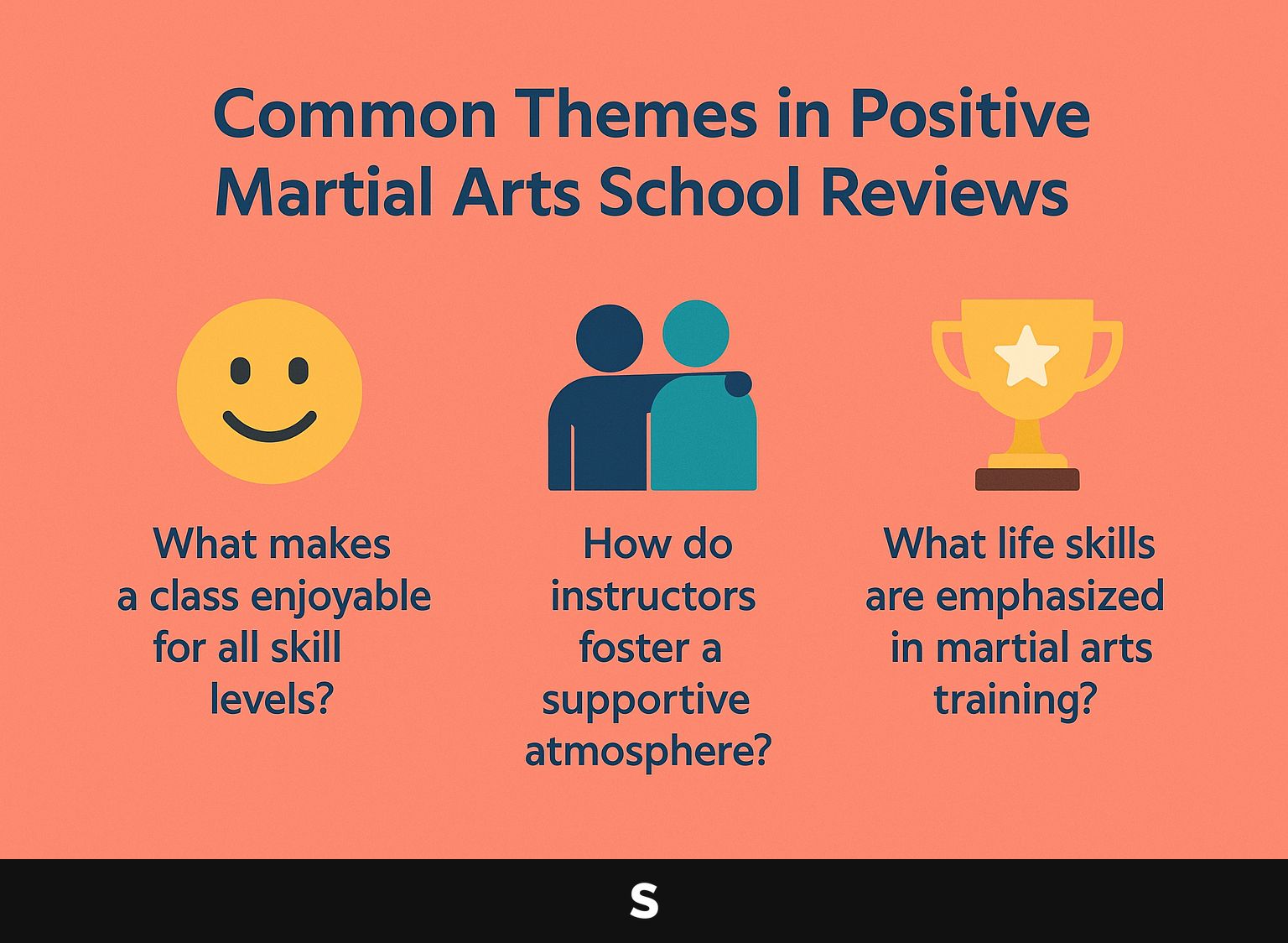
1. What makes a class enjoyable for all skill levels?
Classes are offered for beginners and advanced students. They use different teaching approaches and fun activities to help everyone learn martial arts well and enjoy themselves.
For instance, an effective class might include structured drills that focus on fundamental techniques, allowing beginners to build confidence while also offering advanced sparring sessions for experienced students.
Interactive games, like activities where you work with a partner, can help build friendships and make learning enjoyable. Feedback sessions, where students share their experiences, also promote a sense of community and facilitate improvements in technique.
By bringing together various elements, instructors can create an inviting atmosphere that supports all students, making martial arts more enjoyable and beneficial for everyone.
2. How do teachers create a welcoming environment?
Teachers are important in helping to create a positive environment by offering support, helpful feedback, and ensuring students feel safe to learn and make errors.
To improve this supportive environment, teachers can use regular check-ins and tools like Google Forms to collect feedback from students anonymously.
Students can schedule one-on-one feedback meetings every two weeks to discuss their progress and any problems. For example, instructors at Velez Martial Arts often use a mentorship approach, pairing experienced students with new ones to encourage friendship and peer support.
Creating a positive reinforcement system-recognizing milestones through certificates or shout-outs during classes-encourages students to set and achieve personal goals.
3. What life skills are emphasized in martial arts training?
Martial arts training emphasizes essential life skills such as discipline, respect, and resilience, which are integral to personal development and success both on and off the mat.
Through structured classes, students learn discipline by committing to practice and follow a set routine. For example, many dojos implement a belt-ranking system that requires consistent effort and improvement over time.
People gain more respect for teachers and peers as they engage in joint sparring practice. Learning martial arts helps build strength and determination as students push through difficult exercises. This experience increases their confidence, helping them deal with everyday challenges more easily.
These foundational skills often lead to improvements in academic performance and interpersonal relationships.
4. Reviews from Different Perspectives
Feedback from various people offers a full view of martial arts schools by sharing the experiences of newcomers, parents, and experienced practitioners.
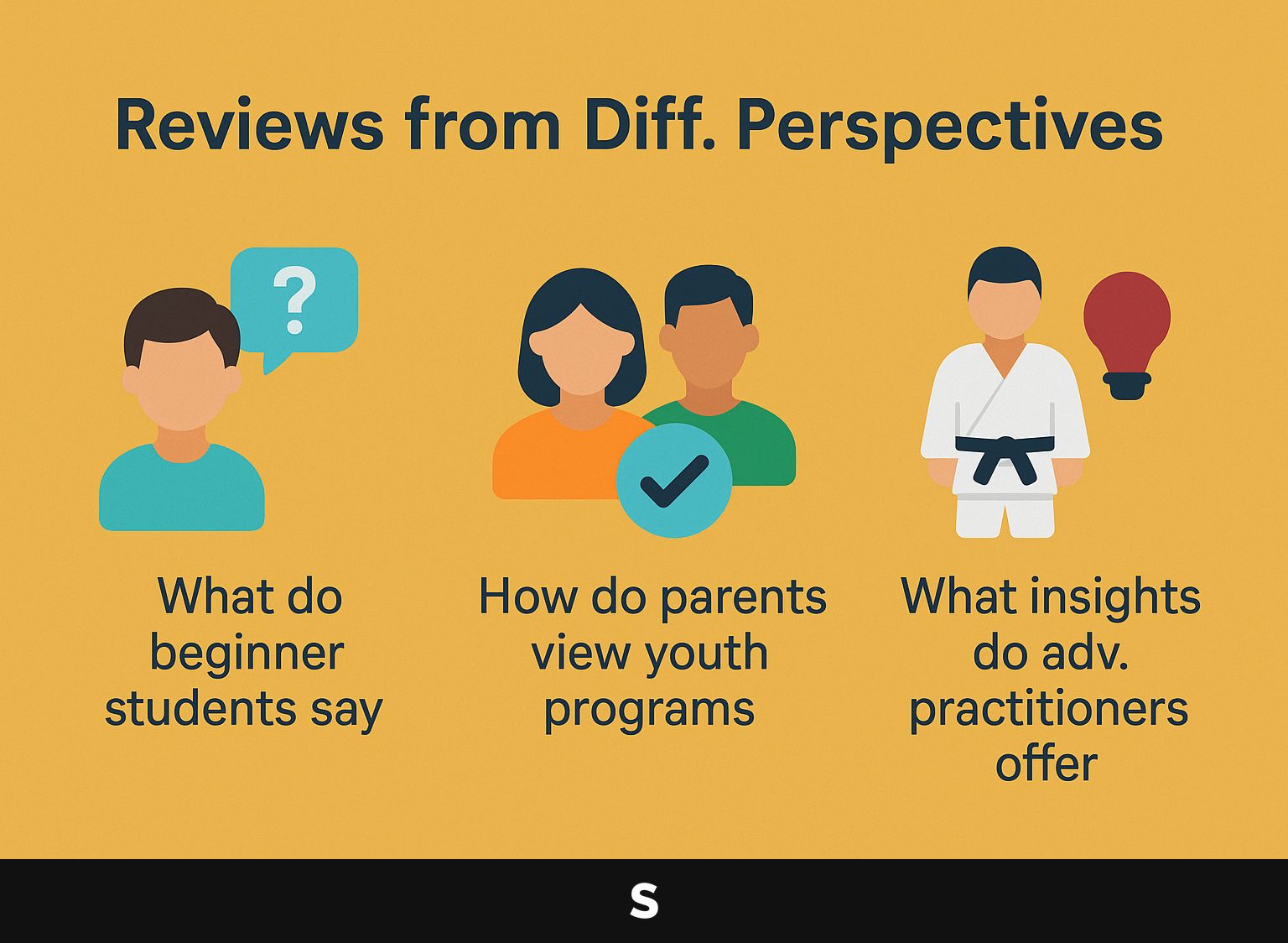
1. What do beginner students say about their experiences?
Beginner students often express feelings of intimidation when starting martial arts, but many reviews highlight how welcoming environments, like that of Kodokai Dojo, help ease these concerns.
Many students share their initial fears about physical contact and competition. One new member said, “I was scared to spar, but the instructors guided us step by step, making it enjoyable.”
Reviewers frequently mention the supportive community at Kodokai Dojo, emphasizing that higher belt students offer encouragement. Many people feel that organized classes with set goals and step-by-step skill building help turn worry into confidence.
For example, the ‘introductory classes’ are designed for beginners, letting them learn comfortably and feel included.
2. How do parents view youth programs in martial arts schools?
Many parents value youth programs in martial arts schools because they help children grow, learn discipline, and enjoy themselves, which are important for kids’ development.
Many reviews point out the significant advantages that these programs provide. For instance, parents note significant improvements in their children’s confidence, as regular practice encourages them to set and achieve personal goals.
Many people also talk about improved social skills, as martial arts classes encourage working together and interacting with others. One mother shared how her son, initially shy, became more outgoing and communicative after just a few months.
The structured environment helps children learn discipline, which translates to better focus in schoolwork. These programs contribute positively to both character building and social engagement.
3. What do experienced practitioners say about schools that include everyone?
Experienced instructors explain how schools open to all students improve learning by highlighting the benefits of having students with different skill levels in the classroom.
Learning in welcoming settings helps experienced individuals improve their skills by working together using shared teaching techniques.
For example, having experienced teachers work with newer ones creates a mentor-student relationship that helps both groups. Workshops that focus on techniques like differentiation strategies or different assessment methods provide a better learning experience.
Tools like Google Classroom for managing classes or Pear Deck for interactive lessons can improve participation. When people with different skill levels work together, it helps each person improve and builds stronger connections among teachers.
How do martial arts schools create an inclusive environment for all skill levels?
Creating an inclusive environment in martial arts schools requires intentional strategies that accommodate and celebrate diversity across all skill levels.
Martial arts schools can use specific practical steps to support inclusivity.
- First, offer classes at various skill levels, ensuring beginners and advanced students can train together safely.
- Using methods that can adjust for students with disabilities is essential, as shown in programs like Martial Arts for Students with Disabilities.
- Organize public seminars that teach self-defense to people of all skill levels. This helps community members connect in a friendly environment.
- Gather feedback from students often to identify ways to make improvements, demonstrating that every opinion is important in shaping how the school involves all individuals.
Factors That Impact Martial Arts School Reviews
Things like location, budget limits, and different martial arts styles greatly affect how people view and judge martial arts school reviews.
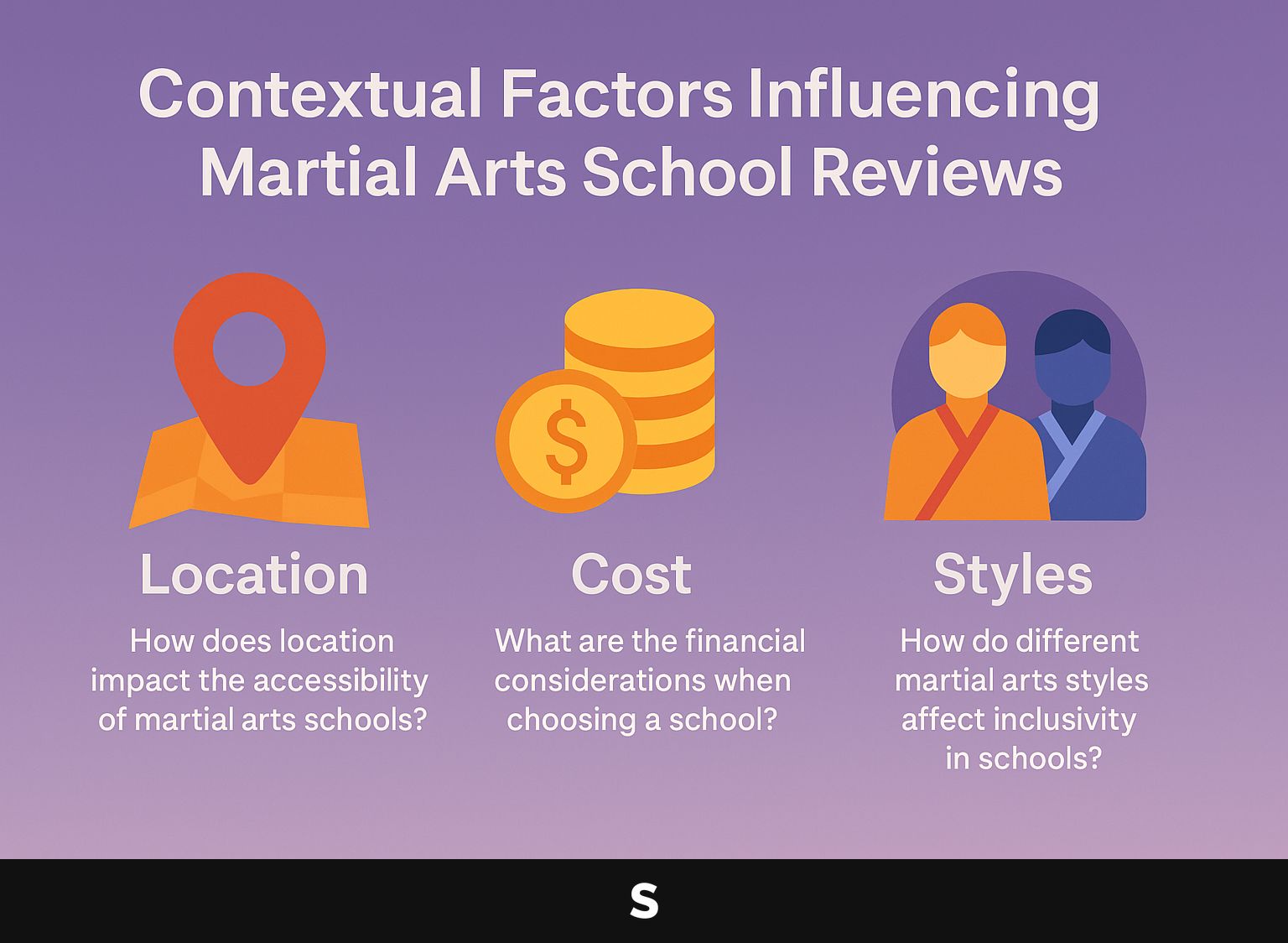
1. How does location impact the accessibility of martial arts schools?
The placement of a martial arts school is important for how easy it is to get to, influencing travel times, community involvement, and the school’s local standing.
Picking a martial arts school near your home or workplace can greatly improve how often you train. For example, a school close to public transport can appeal to busy workers, while a neighborhood dojo builds a stronger sense of community.
Reviews often highlight the convenience of nearby schools that offer flexible scheduling; for instance, Aikido Centers in urban areas may receive praise for their evening classes catering to working adults. Conversely, schools situated in less accessible locations may struggle with attendance, as highlighted by students who value convenience over reputation.
2. What are the financial considerations when choosing a school?
Financial considerations, including tuition fees and additional costs for uniforms or equipment, are critical when choosing a martial arts school, as they can significantly impact a family’s decision.
Typical tuition fees for martial arts classes vary widely. For example, many studios charge between $100 to $200 per month for unlimited classes.
Additional expenses might include:
- A uniform, which costs around $50 to $100
- Sparring gear, often priced at $100 to $300
It’s wise to read online reviews about the school’s financial transparency and value for money; platforms like Yelp and Google Reviews often contain detailed feedback on unexpected costs. Picking a school with transparent pricing helps prevent unexpected costs and makes it a wiser choice.
3. How do different martial arts styles affect inclusivity in schools?
Different martial arts styles can influence the inclusivity of a school’s training environment, with some disciplines emphasizing competition while others focus on personal development.
For example, Brazilian Jiu-jitsu creates an environment where people often help each other to learn, encouraging teaching and friendship.
In contrast, styles like Taekwondo, with their focus on structured competitions and rank advancement, might inadvertently create a more competitive environment.
Reviews from schools highlight that those emphasizing personal goals, like Krav Maga, often report higher student retention due to inclusive practices encouraging students of all backgrounds to participate and improve at their own pace. This approach helps individuals grow and creates a supportive community.
Community Engagement and Martial Arts Schools
Community involvement is an important part of martial arts schools, improving their reputation and building relationships that help both students and local groups.
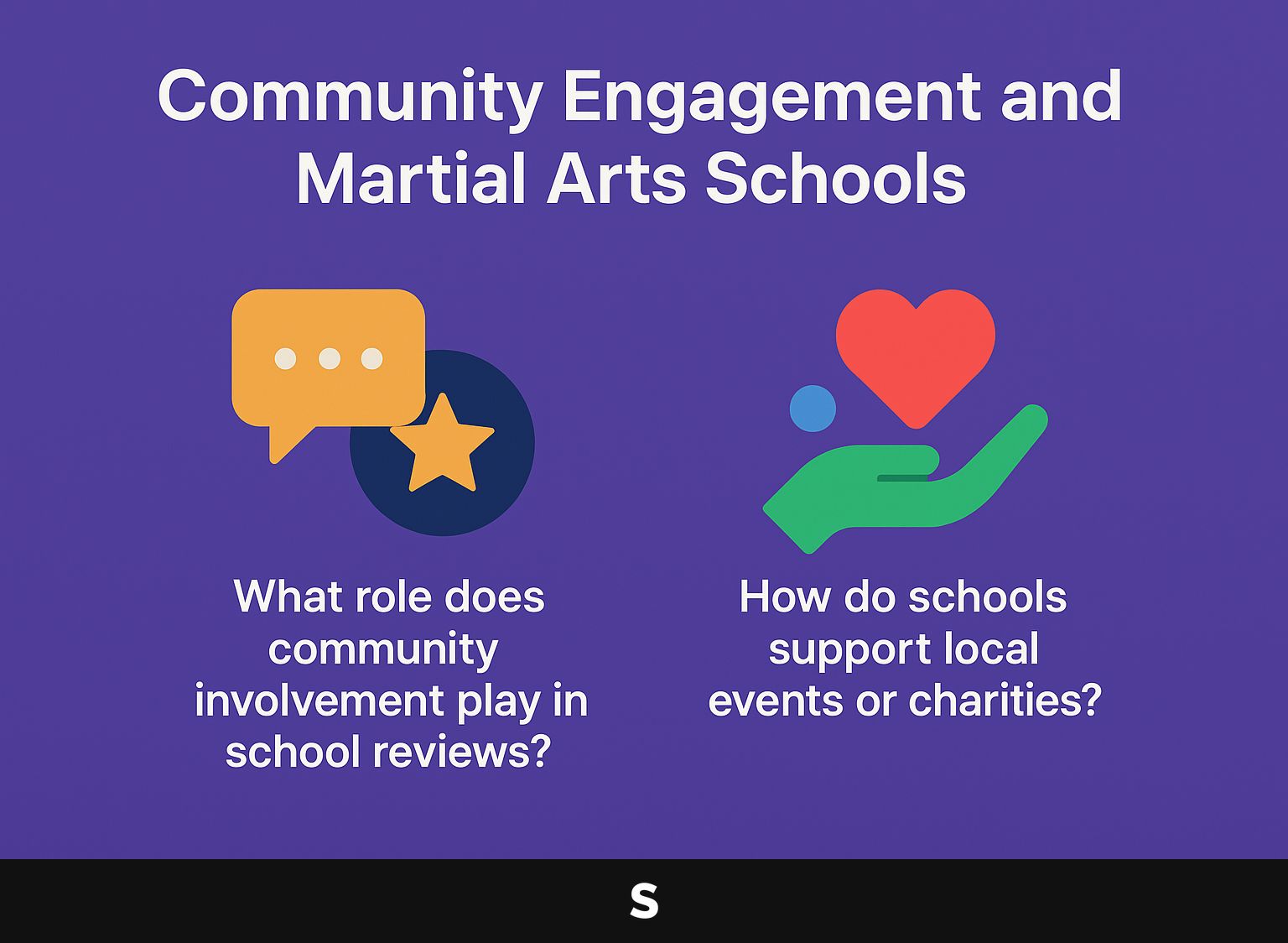
1. What role does community involvement play in school reviews?
Community involvement can heavily influence school reviews, as schools that actively engage with their neighborhoods often receive positive feedback for their commitment to social responsibility.
For example, schools such as Maplewood High are praised for setting up local clean-up events, which help improve their image and build stronger community connections.
Riverside Elementary’s annual charity drives improve their reputation and give important help to local families.
Reviews on sites like GreatSchools often mention these efforts, pointing out how they build a feeling of achievement and teamwork among students and parents.
When schools join community activities, they improve their standing and build important relationships that help everyone.
2. How do schools support local events or charities?
Many martial arts schools show their dedication to the community by helping with local events and charities. This improves their reputation and creates positive feelings among people living in the area.
For example, schools often sponsor youth sports teams, host self-defense workshops for women, or organize charity tournaments. The impact of these initiatives is evident in positive feedback from community members, who appreciate the school’s active involvement.
Many local businesses also partner with martial arts schools for events, creating a beneficial network. Schools that do these activities create a strong connection with their students and become an important part of the community.
Impact of Online Reviews on Martial Arts Schools
Online reviews play a big role in how people view martial arts schools. They help form opinions about the schools’ quality and openness, based on what students say about their experiences on sites like Yelp.
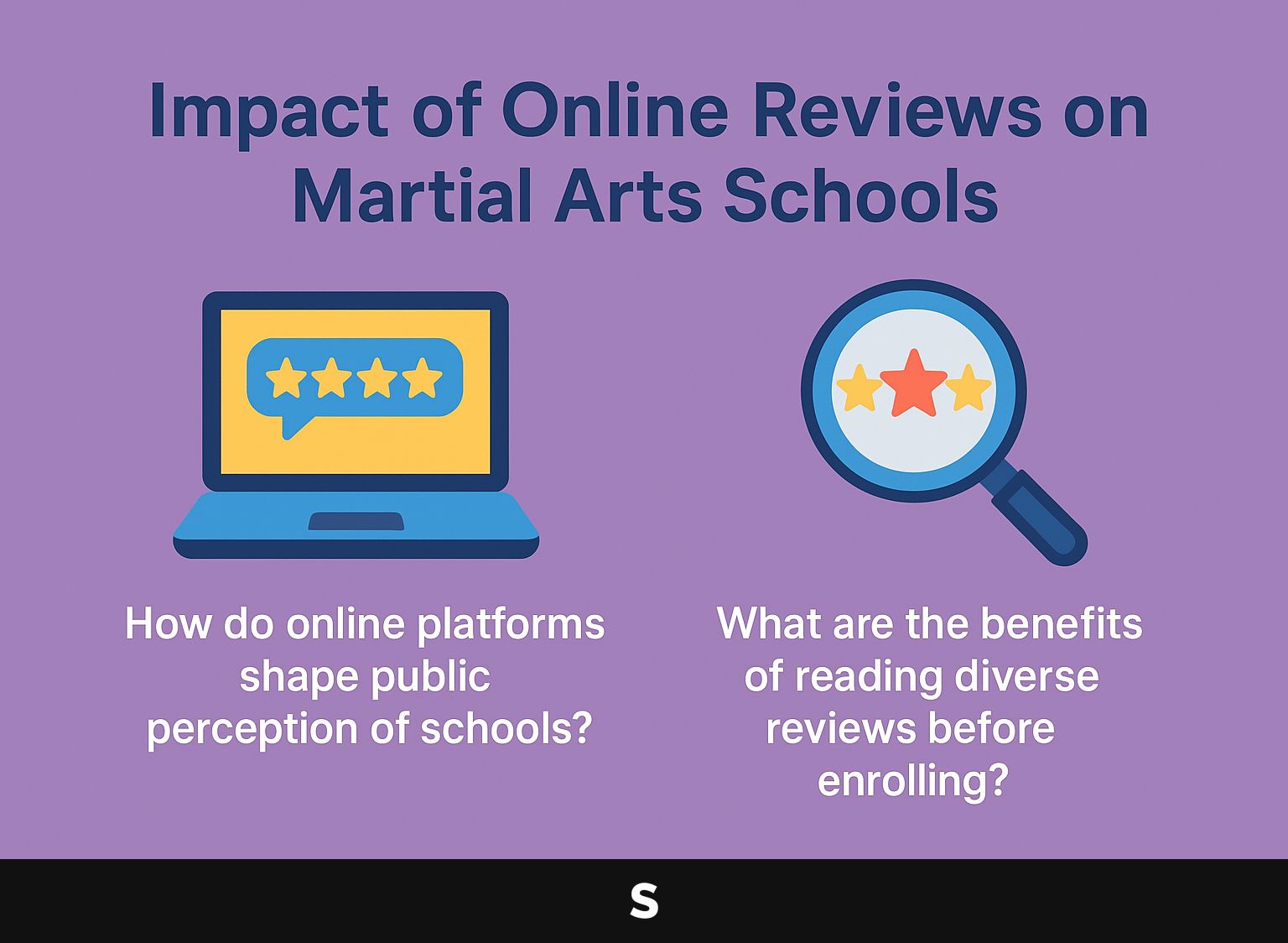
1. How do online platforms shape public perception of schools?
Online platforms are important in influencing how people view martial arts schools. Prospective students often use reviews to judge the quality and openness of these schools before they decide to enroll.
For instance, platforms like Google Reviews and Yelp allow users to share their experiences, often influencing enrollment decisions significantly.
A notable example is a local martial arts school that increased its enrollment by 30% after receiving positive reviews praising its friendly atmosphere.
To improve your school’s presence, actively ask current students to share feedback and reply to reviews quickly, showing potential students that you care about community opinions. Using social media profiles to display classes and share testimonials can improve trust and bring in new members.
2. What are the benefits of reading diverse reviews before enrolling?
Reading reviews helps potential students understand martial arts schools better, showing them different experiences and how friendly the training settings are.
For instance, one student might highlight the supportive community in a local dojo, while another may focus on the high-level competition offered at a more prestigious academy. These different views help potential students understand where they might do well.
Tools like Yelp or Google Reviews can facilitate this exploration. When reviewing, consider key factors such as:
- Instructor credentials
- Class sizes
- Training styles
Mix positive experiences with input to have a complete view and make an informed choice.
Comparative Analysis of Schools Based on Reviews
Reading reviews to compare martial arts schools helps potential students select the most suitable option for their preferences and requirements.
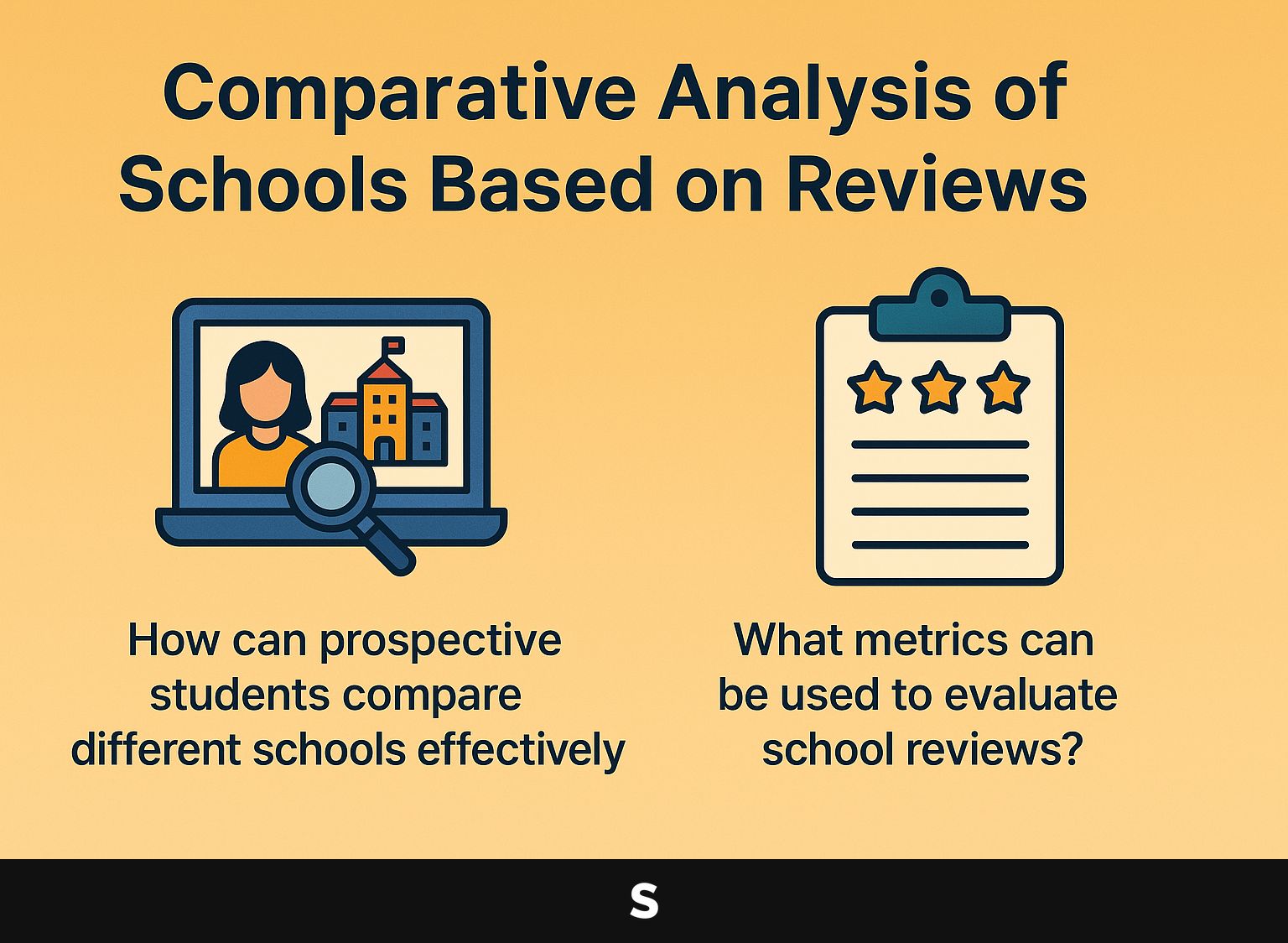
1. How can prospective students compare different schools effectively?
Prospective students can effectively compare different martial arts schools by evaluating key factors such as instructor experience, class sizes, and student feedback highlighted in reviews.
To make your comparison easier, make a list with these criteria.
- For instructor experience, note the number of years each instructor has been training and teaching.
- Include class sizes to understand the individual attention you might receive.
- Collect student reviews from platforms like Yelp or Google to gauge overall satisfaction.
Implement a scoring system where you rate each criterion from 1 to 5; this allows you to quantify your assessment and make an informed decision. Allocate time to visit a few schools for trial classes and firsthand experience.
2. What metrics can be used to evaluate school reviews?
Scores for satisfaction, teacher ratings, and how the school responds to feedback are useful for assessing martial arts school reviews.
- To apply these metrics effectively, start by examining overall satisfaction scores, which can be found on platforms like Google Reviews or Yelp.
- For a deeper dive, consider instructor ratings, assessing factors like teaching style and student engagement.
- Check how quickly schools respond by asking them questions. Fast replies usually show they have good communication habits.
- Look for trends in reviews; consistent themes can reveal strengths or weaknesses in a school’s program or culture, leading to a more informed decision.
Upcoming Patterns in Martial Arts School Evaluations
Technology is changing how people share, find, and read reviews of martial arts schools, affecting how new students learn about them.
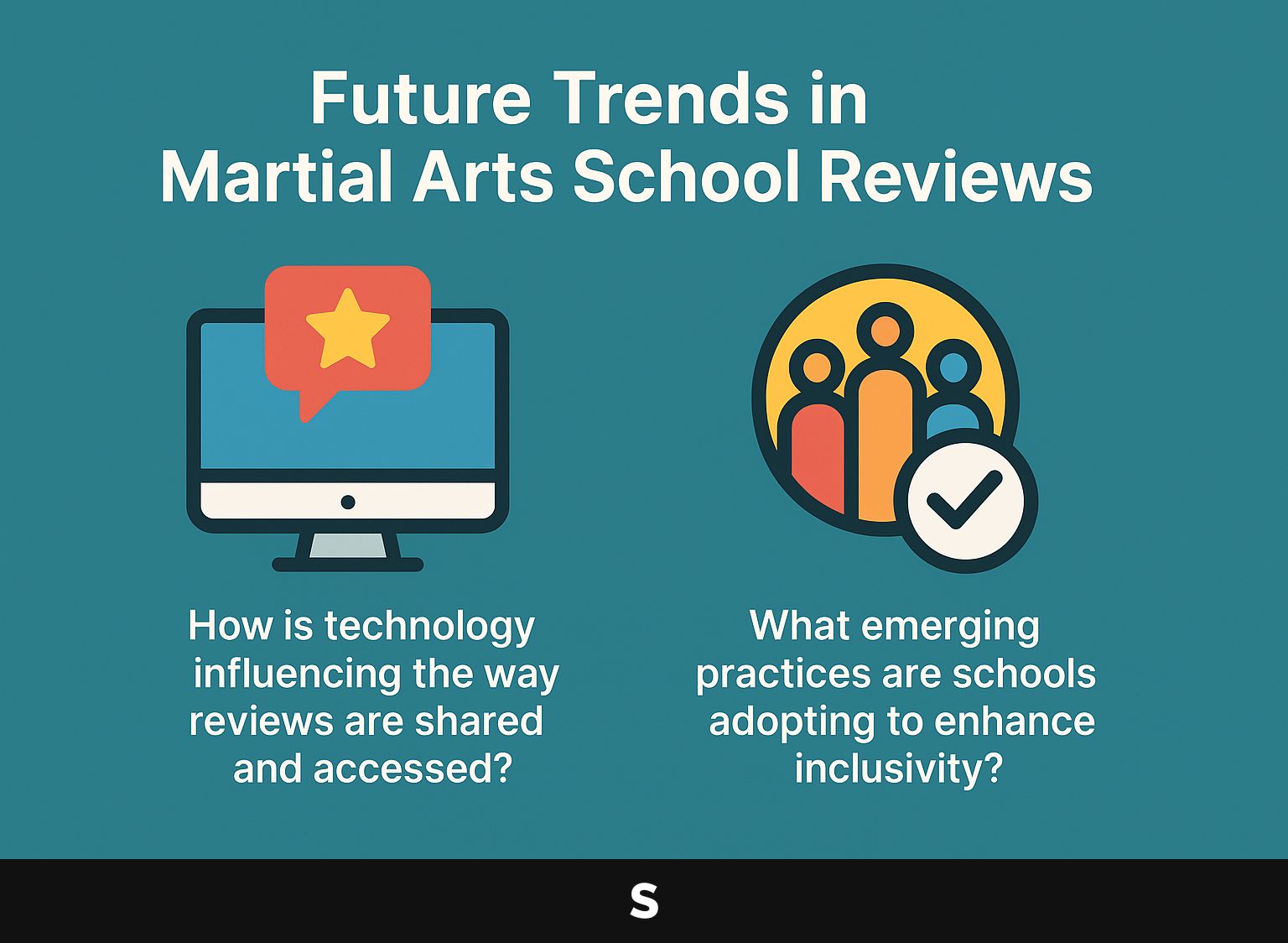
Technology is changing how martial arts school reviews are shared and accessed. Social media and mobile apps allow students to quickly share their experiences.
Schools can use platforms like Facebook and Instagram to encourage students to share their thoughts along with photos or videos from events or training sessions. By creating a dedicated hashtag, schools can track and promote these posts, enhancing visibility.
Apps like Yelp and Google Reviews offer clear ways for students to share their detailed experiences, which helps increase the school’s reputation.
Interacting directly with these platforms builds community and draws in new students by effectively displaying positive feedback.
2. What new methods are schools using to improve inclusivity?
Martial arts schools are starting to use new training methods and community programs to make their classes more welcoming and to support a wide range of students.
For example, many schools are implementing workshops that focus on inclusivity, teaching instructors how to accommodate students with disabilities and varying skill levels.
Programs that work with local groups, such as disabled veterans organizations or schools for disadvantaged children, build community relationships and increase involvement.
Schools are using feedback from parents and students to change classes and schedules, ensuring everyone feels welcome and supported. These initiatives have led to positive reviews, highlighting improved retention rates and student satisfaction.
Frequently Asked Questions
1. What makes a martial arts school welcoming for all skill levels?
A friendly martial arts school knows that new students may not have any previous experience. They make a space where people, no matter their experience, can feel at ease and encouraged as they learn.
2. Why are welcoming martial arts reviews important?
Friendly reviews of martial arts offer helpful information for people who might feel unsure about trying martial arts because they feel nervous or lack experience. These reviews can help break down barriers and encourage people of all skill levels to join a class.
3. How do inclusive martial arts reviews benefit families?
Inclusive martial arts reviews benefit families by providing a safe and positive learning environment for all members. This creates a sense of community and promotes a healthy and active lifestyle for the whole family.
4. Why is it important for martial arts schools to focus on life skills?
Martial arts is not just about physical fitness and self defense, it also teaches important life skills such as discipline, respect, and self-confidence. A friendly martial arts school knows these skills are important and includes them in their lessons.
5. How can a martial arts school accommodate individuals of different skill levels?
A friendly martial arts school can handle various skill levels by providing different types of classes, custom instruction, and fostering a supportive and open environment. This allows individuals to progress at their own pace and feel comfortable in the learning process.
6. What sets a welcoming martial arts school apart from others?
A welcoming martial arts school stands out from others by creating an inclusive and supportive learning environment for individuals of all skill levels. They prioritize the growth and well-being of their students, rather than just focusing on physical techniques and abilities.

